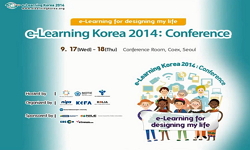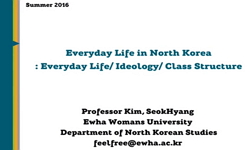This study was performed to evaluate the effect of dietary factors for mercury exposure by comparing with blood mercury concentration. Study population consisted of 1,866 adults (839 men and 1,027 women) in randomly-selected 30 districts in southeast ...
http://chineseinput.net/에서 pinyin(병음)방식으로 중국어를 변환할 수 있습니다.
변환된 중국어를 복사하여 사용하시면 됩니다.
- 中文 을 입력하시려면 zhongwen을 입력하시고 space를누르시면됩니다.
- 北京 을 입력하시려면 beijing을 입력하시고 space를 누르시면 됩니다.
https://www.riss.kr/link?id=A104783770
- 저자
- 발행기관
- 학술지명
- 권호사항
-
발행연도
2014
-
작성언어
-
-
주제어
Blood Mercury ; Food Analysis ; Dietary Exposure ; Seafood ; Adult ; Korea
-
등재정보
KCI등재,SCI,SCIE,SCOPUS
-
자료형태
학술저널
-
수록면
176-182(7쪽)
-
KCI 피인용횟수
11
- 제공처
- 소장기관
-
0
상세조회 -
0
다운로드
부가정보
다국어 초록 (Multilingual Abstract)
This study was performed to evaluate the effect of dietary factors for mercury exposure by comparing with blood mercury concentration. Study population consisted of 1,866 adults (839 men and 1,027 women) in randomly-selected 30 districts in southeast Korea. Dietary mercury intake was calculated from food frequency questionnaire (FFQ) on seafood items and 24 hr recall record. Blood mercury concentration was measured with atomic absorption spectrometry. Mean age of the subjects was 43.5±14.6 yr. The FFQ showed that mercury-laden fish (tuna, shark) and frequently-eating fish (squid, belt fish, mackerel) were important in mercury intake from fish species. The recall record suggested that fish and shellfish was a highest group (63.1%) of mercury intake and had a wide distribution in the food groups. In comparison with the blood mercury concentration, age group, sex, household income, education, drinking status and coastal area were statistically significant (P<0.001). In multiple regression analysis, coefficient from the FFQ (β=0.003) had greater effect on the blood mercury than the recall record (β=0.002), but the effect was restricted (adjusted R2=0.234). Further studies with more precise estimation of dietary mercury intake were required to evaluate the risk for mercury exposure by foods and assure risk communication with heavily-exposed group.
참고문헌 (Reference)
1 김희연, "유통 중인 어류의 중금속 모니터링-비소, 카드뮴, 구리, 납, 망간, 아연, 총수은 -" 한국식품과학회 39 (39): 353-359, 2007
2 최훈, "식품 중 수은 위해평가" 한국식품과학회 44 (44): 106-113, 2012
3 National Research Council, "Toxicological effects of methylmercury" National Academy Press 2000
4 Clarkson TW, "The three modern faces of mercury" 110 : 11-23, 2002
5 Ikingura JR, "Methylmercury production and distribution in aquatic systems" 234 : 109-118, 1999
6 Sirot V, "Methylmercury exposure assessment using dietary and biomarker data among frequent seafood consumers in France CALIPSO study" 107 : 30-38, 2008
7 Li P, "Methylmercury exposure and health effects from rice and fish consumption: a review" 7 : 2666-2691, 2010
8 Xue J, "Methyl mercury exposure from fish consumption in vulnerable racial/ethnic populations: probabilistic SHEDS-dietary model analyses using 1999-2006 NHANES and 1990-2002 TDS data" 414 : 373-379, 2012
9 Zukowska J, "Methodological evaluation of method for dietary heavy metal intake" 73 : R21-R29, 2008
10 Stern AH, "Mercury and methylmercury exposure in the New Jersey pregnant population" 56 : 4-10, 2001
1 김희연, "유통 중인 어류의 중금속 모니터링-비소, 카드뮴, 구리, 납, 망간, 아연, 총수은 -" 한국식품과학회 39 (39): 353-359, 2007
2 최훈, "식품 중 수은 위해평가" 한국식품과학회 44 (44): 106-113, 2012
3 National Research Council, "Toxicological effects of methylmercury" National Academy Press 2000
4 Clarkson TW, "The three modern faces of mercury" 110 : 11-23, 2002
5 Ikingura JR, "Methylmercury production and distribution in aquatic systems" 234 : 109-118, 1999
6 Sirot V, "Methylmercury exposure assessment using dietary and biomarker data among frequent seafood consumers in France CALIPSO study" 107 : 30-38, 2008
7 Li P, "Methylmercury exposure and health effects from rice and fish consumption: a review" 7 : 2666-2691, 2010
8 Xue J, "Methyl mercury exposure from fish consumption in vulnerable racial/ethnic populations: probabilistic SHEDS-dietary model analyses using 1999-2006 NHANES and 1990-2002 TDS data" 414 : 373-379, 2012
9 Zukowska J, "Methodological evaluation of method for dietary heavy metal intake" 73 : R21-R29, 2008
10 Stern AH, "Mercury and methylmercury exposure in the New Jersey pregnant population" 56 : 4-10, 2001
11 Clarkson TW, "Mechanisms of mercury disposition in the body" 50 : 757-764, 2007
12 Auger N, "Low-level methylmercury exposure as a risk factor for neurologic abnormalities in adults" 26 : 149-157, 2005
13 Lee JW, "Korea National Survey for Environmental Pollutants in the Human Body 2008: heavy metals in the blood or urine of the Korean population" 215 : 449-457, 2012
14 National Institute of Food and Drug Safety Evaluation, "Human risk assessment of heavy metals in food for safety management systems" National Institute of Food and Drug Safety Evaluation 2010
15 Moon HB, "Exposure assessment for methyl and total mercury from seafood consumption in Korea, 2005 to 2008" 13 : 2400-2405, 2011
16 National Institute of Food and Drug Safety Evaluation, "Dietary intake and risk assessment of contaminants in Korean food" National Institute of Food and Drug Safety Evaluation 133-154, 2009
17 Lee HS, "Dietary exposure of the Korean population to arsenic, cadmium, lead and mercury" 19 : S31-S37, 2006
18 Kwon YM, "Dietary exposure and risk assessment of mercury from the Korean total diet study" 72 : 1484-1492, 2009
19 Endo T, "Contamination level of mercury in red meat products from cetaceans available from South Korea markets" 54 : 669-677, 2007
20 Tran NL, "Combining food frequency and survey data to quantify long-term dietary exposure: a methyl mercury case study" 24 : 19-30, 2004
21 Agency for Toxic Substance and Disease Registry, "CERCLA priority list of hazardous substances 2011"
22 Kim NS, "Blood total mercury and fish consumption in the Korean general population in KNHANES III, 2005" 408 : 4841-4847, 2010
23 Son JY, "Blood levels of lead, cadmium, and mercury in the Korean population: results from the Second Korean National Human Exposure and Bio-monitoring Examination" 109 : 738-744, 2009
24 Ward DM, "Bioaccumulation syndrome: identifying factors that make some stream food webs prone to elevated mercury bioaccumulation" 1195 : 62-83, 2010
25 Kipnis V, "Bias in dietary-report instruments and its implications for nutritional epidemiology" 5 : 915-923, 2002
26 Yaginuma-Sakurai K, "Assessment of exposure to methylmercury in pregnant Japanese women by FFQ" 12 : 2352-2358, 2009
27 Carrington CD, "An exposure assessment for methylmercury from seafood for consumers in the United States" 22 : 689-699, 2002
동일학술지(권/호) 다른 논문
-
- 대한의학회
- 이태진
- 2014
- KCI등재,SCI,SCIE,SCOPUS
-
- 대한의학회
- 윤혜은
- 2014
- KCI등재,SCI,SCIE,SCOPUS
-
Sleep Disturbances and Glucoregulation in Patients with Type 2 Diabetes
- 대한의학회
- 조은희
- 2014
- KCI등재,SCI,SCIE,SCOPUS
-
- 대한의학회
- 황재하
- 2014
- KCI등재,SCI,SCIE,SCOPUS
분석정보
인용정보 인용지수 설명보기
학술지 이력
| 연월일 | 이력구분 | 이력상세 | 등재구분 |
|---|---|---|---|
| 2023 | 평가예정 | 해외DB학술지평가 신청대상 (해외등재 학술지 평가) | |
| 2020-01-01 | 평가 | 등재학술지 유지 (해외등재 학술지 평가) |  |
| 2011-01-01 | 평가 | 등재학술지 유지 (등재유지) |  |
| 2009-01-01 | 평가 | 등재학술지 유지 (등재유지) |  |
| 2005-01-01 | 평가 | SCI 등재 (등재유지) |  |
| 2002-01-01 | 평가 | 등재학술지 선정 (등재후보2차) |  |
| 1999-07-01 | 평가 | 등재후보학술지 선정 (신규평가) |  |
학술지 인용정보
| 기준연도 | WOS-KCI 통합IF(2년) | KCIF(2년) | KCIF(3년) |
|---|---|---|---|
| 2016 | 1.48 | 0.37 | 1.06 |
| KCIF(4년) | KCIF(5년) | 중심성지수(3년) | 즉시성지수 |
| 0.85 | 0.75 | 0.691 | 0.11 |







 KCI
KCI







